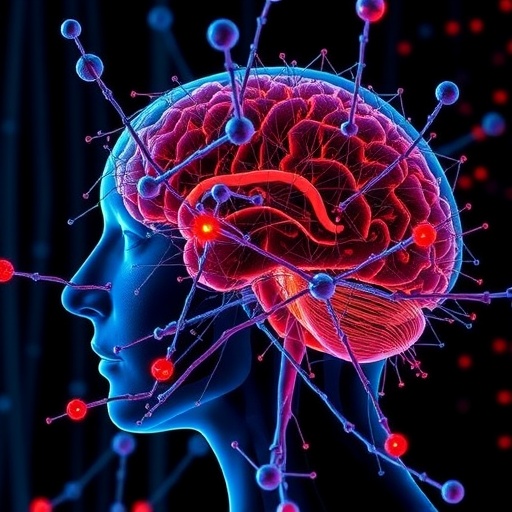In recent years, the scientific community has witnessed a paradigm shift in understanding the complex origins of Parkinson’s disease (PD), a neurodegenerative disorder that affects millions worldwide. The groundbreaking research presented by Bernhardt and Schulze-Hentrich in the latest issue of npj Parkinson’s Disease offers a comprehensive, multi-dimensional framework to unravel the enigmatic etiology of PD. This pioneering work not only challenges the conventional single-factor hypotheses but also integrates genetic, environmental, molecular, and cellular perspectives into a cohesive narrative, compelling a reevaluation of how Parkinson’s disease develops and progresses.
For decades, Parkinson’s disease has been primarily characterized by the gradual loss of dopaminergic neurons in the substantia nigra, manifesting clinically as motor dysfunction and a spectrum of non-motor symptoms. However, the heterogeneity of PD phenotypes and the variable progression rates across patients have pointed toward a deeply intricate web of pathological mechanisms. Bernhardt and Schulze-Hentrich’s research advances this understanding by proposing a sophisticated model that highlights the interplay among diverse etiological dimensions, each contributing uniquely yet synergistically to disease onset and trajectory.
Central to their approach is the recognition that genetic predispositions are insufficient alone to precipitate Parkinson’s disease. The authors meticulously dissect an array of genetic mutations and polymorphisms that have been identified in both familial and sporadic cases, emphasizing their roles in biochemical pathways such as mitochondrial function, lysosomal degradation, and protein aggregation. Yet, these genetic factors are not deterministic but rather modulate susceptibility that may manifest under particular environmental or physiological stresses.
Environmental exposures, as detailed in the study, are pivotal in the etiopathogenesis of PD. The article elucidates the impact of neurotoxic pesticides, heavy metals, and obstructive airborne particulates that contribute to oxidative stress and inflammatory cascades within the central nervous system. Such insults can potentiate the vulnerability established by genetic susceptibilities, exacerbating cellular dysfunction. The authors also point to intriguing epidemiological correlations, noting differences in incidence rates across geographic regions and occupational cohorts, thereby underscoring the need for integrative environmental assessments in future PD research.
On a molecular level, the authors delve deep into the pathogenic mechanisms involving alpha-synuclein, a presynaptic neuronal protein whose abnormal aggregation forms the hallmark Lewy bodies found in PD brains. Their multi-faceted analysis explicates how post-translational modifications, misfolding, and impaired clearance of alpha-synuclein interact with mitochondrial deficits and endoplasmic reticulum stress to initiate and perpetuate neurodegeneration. This nexus of molecular dysfunctions is posited as a cornerstone for the disease, potentially serving as a critical target for novel therapeutic interventions.
Crucially, the article sheds light on the emerging relevance of neuroinflammation in Parkinson’s disease progression. Through a detailed examination of glial cell activation and chronic inflammatory signaling, Bernhardt and Schulze-Hentrich argue that immune responses within the brain may not merely be bystanders but active drivers of neuronal loss. Their data suggest a feedback loop wherein neuronal injury amplifies microglial activation, which in turn exacerbates oxidative and proteostatic stress, resulting in a self-propagating cycle detrimental to neuronal survival.
The utility of a multi-dimensional framework is further demonstrated by the authors’ incorporation of cellular models and advanced neuroimaging findings. These insights reveal that PD pathology extends beyond the nigrostriatal pathway, encompassing widespread neural networks implicated in autonomic, cognitive, and mood regulation. This systemic involvement dovetails with the clinical heterogeneity observed among patients and highlights the imperative for holistic diagnostic criteria and management strategies tailored to multi-focal neurodegenerative processes.
Another innovative aspect of this research is the integration of temporal dynamics into the etiological model. The authors propose a staged progression of pathological events, beginning with subtle molecular aberrations and culminating in overt neuronal death and clinical symptomatology. This temporal perspective encourages the identification of prodromal biomarkers and therapeutic windows that could transform PD from an irreversible condition to one amenable to early intervention and possibly prevention.
Their exploration also addresses the bidirectional communication between the gut and brain, reinforcing the gut-brain axis theory in PD etiology. The study presents compelling evidence for gut microbiota alterations and peripheral immune activation as contributors to central nervous system inflammation and alpha-synuclein pathology. This gut-centric component complicates the classical neurocentric viewpoint and opens avenues for innovative treatment modalities, such as microbiome modulation and anti-inflammatory strategies targeting peripheral tissues.
Importantly, Bernhardt and Schulze-Hentrich advocate for a personalized medicine approach shaped by this multi-dimensional outlook. They envisage the development of patient-specific profiles that encompass genetic markers, environmental exposures, molecular signatures, and clinical phenotypes. Such stratification could not only refine prognostic accuracy but also optimize therapeutic regimens by aligning treatments with individual etiological factors, thereby maximizing efficacy and minimizing adverse effects.
The study’s ramifications extend beyond academic insight into tangible clinical implications. By emphasizing the intertwined nature of genetic vulnerabilities and modifiable environmental factors, it calls for public health initiatives aimed at risk reduction, including stricter regulation of neurotoxins and lifestyle interventions to bolster neural resilience. These preventative strategies, coupled with potent disease-modifying therapies, promise a future where Parkinson’s disease incidence and progression can be substantially mitigated.
Moreover, the interdisciplinary nature of this research fosters collaborative efforts across neurobiology, immunology, environmental science, and data analytics. Such synergy is essential to dissect the complicated etiology of PD, and the article sets a precedent for integrative research frameworks that transcend traditional disciplinary boundaries. This holistic approach is vital for the translation of mechanistic insights into real-world clinical advances.
In concluding, Bernhardt and Schulze-Hentrich’s multi-dimensional model of Parkinson’s disease etiology is a monumental step forward in neuroscientific research. By weaving together genetic, environmental, molecular, inflammatory, and systemic threads, they have constructed a nuanced tapestry that captures the intricate reality of PD pathogenesis. Their work not only enriches the scientific discourse but also ignites hope for more effective diagnostic tools, targeted therapies, and ultimately, strategies to prevent or cure this devastating disorder.
This pioneering research challenges the community to move beyond reductionist views and embrace the complexity inherent in neurodegenerative diseases. As the global burden of Parkinson’s disease escalates, such comprehensive and integrative approaches are indispensable for generating breakthroughs that can alter the trajectory of patients’ lives, transforming despair into optimism.
The implications of this study are profound, signaling a new era in Parkinson’s disease research where multi-dimensional models guide experimental design, clinical evaluation, and policy formulation. It owes its strength to meticulous analysis, innovative thinking, and an unwavering commitment to unraveling the mysteries of human neurodegeneration. Bernhardt and Schulze-Hentrich have set a new standard, illuminating paths that researchers and clinicians alike must navigate as they strive to conquer Parkinson’s disease.
Subject of Research: Parkinson’s disease etiology
Article Title: A multi-dimensional view on the etiology of Parkinson’s disease
Article References:
Bernhardt, R., Schulze-Hentrich, J. A multi-dimensional view on the etiology of Parkinson’s disease. npj Parkinsons Dis. 11, 294 (2025). https://doi.org/10.1038/s41531-025-01150-5
Image Credits: AI Generated
Tags: comprehensive frameworks in PD researchdisease progression in Parkinson’sdopaminergic neuron lossetiology of Parkinson’s diseasegenetic and environmental factors in PDgenetic mutations and Parkinson’sheterogeneity of Parkinson’s disease phenotypesmotor and non-motor symptoms of Parkinson’smulti-dimensional approach to PDneurodegenerative disordersParkinson’s disease researchpathological mechanisms of Parkinson’s





